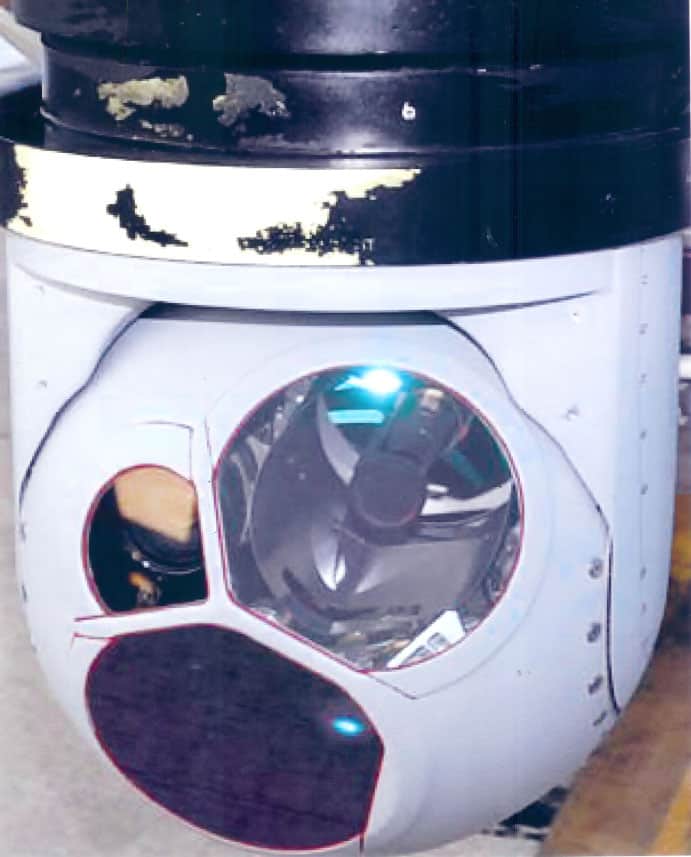CASPER –Chin Turret
Drug Interdiction efforts in the Caribbean had produced positive results during the proof of concept surge operations of 1996 through 1998. A large part of the success was due to much better intelligence information and cooperation among the agencies involved. This combined with integrated surface and air interdiction assets produced a very effective deterrent. An aircraft capable of detecting, classifying and evaluating target vessels day or night, from high altitude, and from a stand-off distance was a force multiplier. The Navy’s E2C was ideal for this assignment and the Customs P3’s were also good and more cost effective. The problem was that assistance from these aircraft was limited due to the source country operation strategy in place. To address the issue and reduce transit time the Navy began temporary assignment of E2C aircraft based out of Roosevelt Roads, Puerto Rico, for two month periods beginning in late 1998 and Customs stationed four P3 aircraft at NAS Jacksonville in 1999. Also, beginning in 1999, an upgrade of sensor and communication capability of Coast Guard aircraft to fully support interdiction efforts was initiated.
The HC-130H fleet was provided with a sensor suite upgrade named CASPER which was an acronym for C-130 Airborne Palletized Electronic Reconnaissance. The sensor suite had three major components: a chin mounted turret, a communications suite, and an airborne tactical work station. The turret housed the Wescam Model 20 forward looking infrared radar (FLIR) / electro-optical (EO) group. Step zoom FLIR, low magnification continuous zoom EO, and high magnification step zoom low light sensor. The communications system included military satellite capability. The communication system, capable of voice and data, allowed an array of tactical data to be exchanged over a variety of paths. The airborne workstation (ATW) is comprised of numerous computer, interface, communications, and video cards housed in a rugged chassis. All imagery is processed through the ATW for transmission. Complimented with the APS-137 radar, aircrews can evaluate radar targets during low visibility and night operations. The control and operating station is located in the C-130 cargo compartment mounted on a standard aluminum aircraft pallet that can easily be rolled on and off the aircraft. The CASPER upgrade was a force multiplier and increases operational capabilities in Search and Rescue operations and migrant interdiction as well as drug interdiction operations.
The HU-25s were sensored for specific missions. The base model HU-25A was configured with an APS-127 search radar only. The HU-25B also had APS-127 surface search radar and in addition was modified to carry the APS-131 Side Looking Airborne Radar (SLAR) and an RS-18c Infrared/Ultraviolet (IR/UV) scanner for the detection of oil spills. The HU-25C was equipped with APG-66 air and surface radar, WF-360 FLIR, MILSATCOM and was capable of air intercept operations. The HU-25As were upgraded by installing a SAR/ISAR radar for detection of low profile vessels, a FLIR/EO system capable of classifying contacts at increased stand-off distances, a commercial SATCOM and an advanced tactical work station. The HU-25Bs were upgraded with SAR/ISAR radar, FLIR/EO equipment, a commercial SATCOM and night photo capability. The Aireye was also upgraded. The HU-25C had an upgraded APS-66 radar, FLIR/EO, a tactical work station and night photo capability.
MH-68A all weather, short range interdiction, shipboard deployable helicopters were acquired to fully implement the airborne use of force capability for drug interdiction operations.

